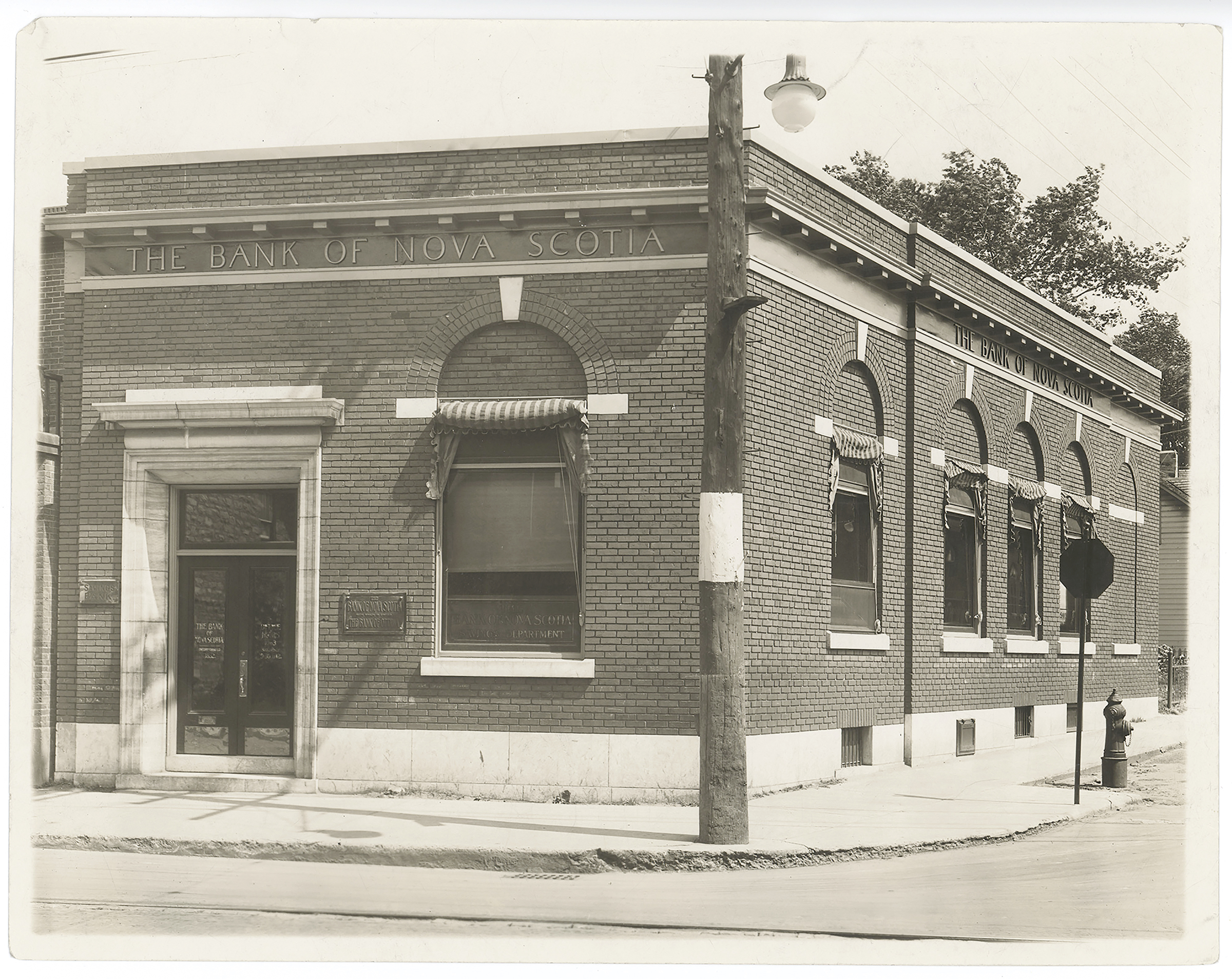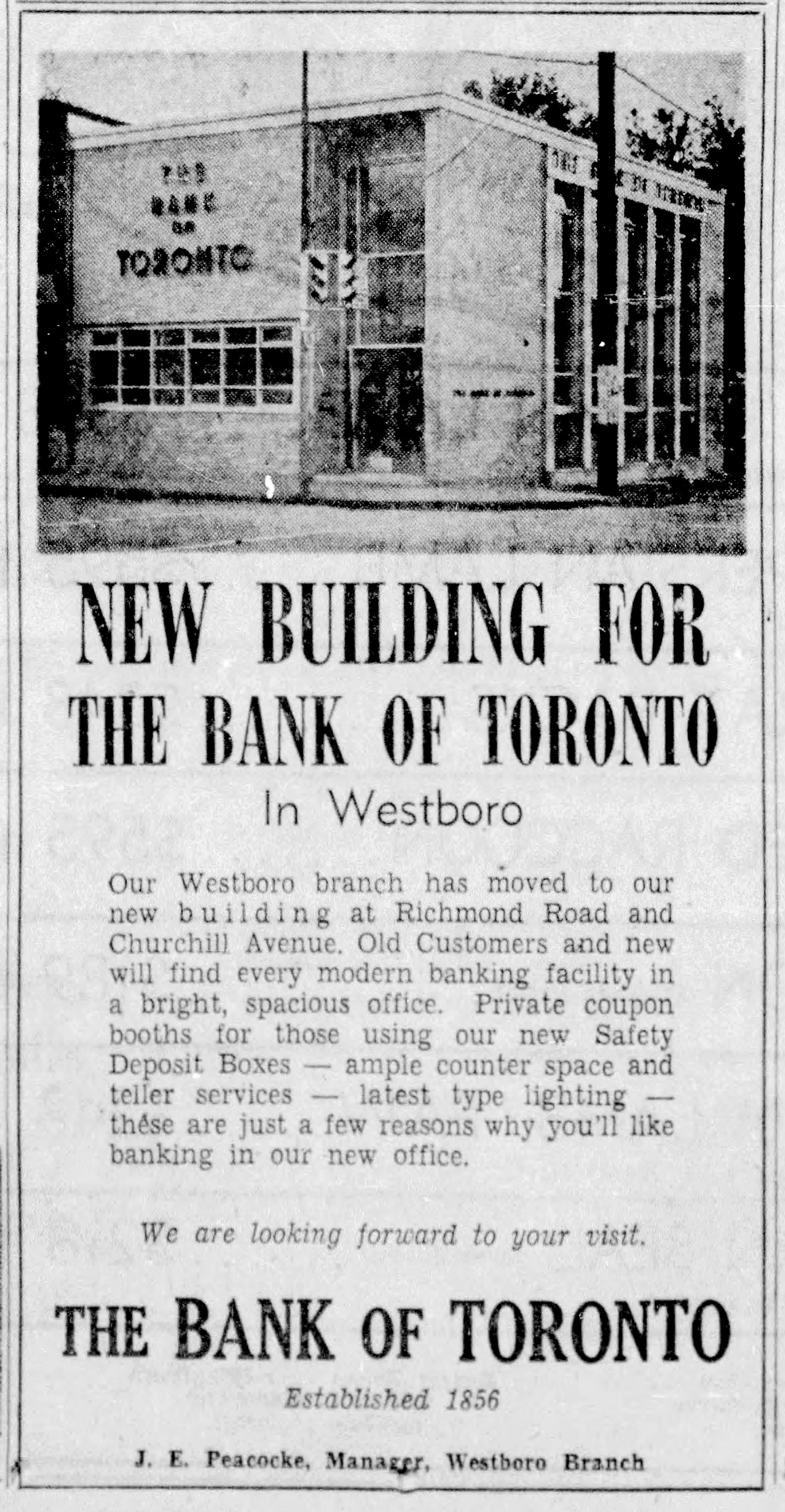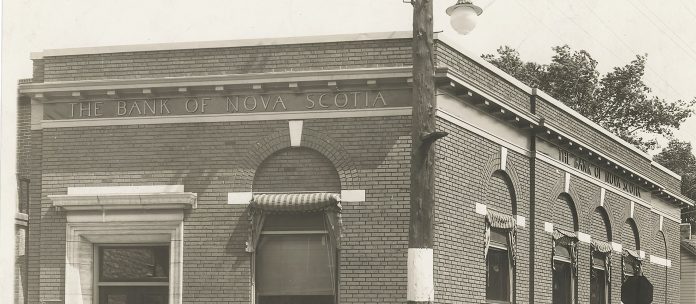
By Dave Allston –
These days, the Wellington-Richmond corridor through Kitchissippi features a bank seemingly every 100 metres ?– each branch offering a multitude of services. But banking in the ward wasn’t always this convenient.
Though banks have a long history in our neighbourhood, their presence, appearance and particularly their roles have changed significantly over time.
While the history of banking in Canada began in the early 19th century, the development of currency mirrored the development of the country itself. For years, coins, tokens, notes and even playing cards were used as legal tender, their origins a mix of American, British, French and other influences. Meanwhile, our currency had various names, including pounds and francs, and various versions of dollars held different and inconsistent values ?– even regionally within Canada.
During the 1800s, individual banks, starting with the Bank of Montreal in 1817 (just after its incorporation), issued their own bank notes (which they would continue to do until the 1930s). Confederation brought much-needed organization to banking and money in Canada, establishing uniform values of currency, enabling the federal government to issue bank notes (backed by gold reserves) and creating a uniform system of banking regulation for Canada. Strategically, only the federal government could issue currency in low-value denominations (less than five dollars), to reduce the power of chartered banks. The government began doing so soon after Confederation.
It would not be until 1935, during the depths of the Great Depression, that the Bank of Canada was established and the first set of Bank of Canada bills were issued. Individual banks were no longer permitted to issue their own notes, making the Bank of Canada the sole issuer of Canadian bills.
The first bank in Kitchissippi did not arrive until 1907 ?– before that, residents and merchants had to travel to central Ottawa to do their banking. You might be surprised to know that banks generally just had one branch in a city, and those branches offered far fewer services than today’s. In fact, banks largely catered to business owners and the affluent, providing minimal services to regular citizens.
A typical bank’s services at that time included vaults and safety deposit boxes to hold money, gold and valuables; commercial loans to prospective merchants; savings accounts on which interest was paid (at a rate of three per cent, paid out quarterly); money orders for sending small amounts (under $50) within Canada; cheques for clients to use in daily life; and travellers’ letters of credit to be used in other parts of the world.

Personal loans and mortgages were rarely, if ever, offered by banks of that era. Mortgages were typically secured largely through a loan directly from the seller or from an affluent individual. Insurance companies and loan houses were also options to obtain funds; banks were not allowed to offer mortgages until the 1950s. CIBC was the first Canadian bank to establish a personal loans department in 1936 (and even then, loans were offered only to a maximum of $1,000).
Banks in Ottawa, particularly in the suburbs, were small operations. One of the many chartered banks in Canada at that time would open a small office in whatever real estate was available, often in converted houses or shops. With the simplicity of technology and the obvious security limitations of the era, one can imagine how relatively easy it would have been to rob a bank back then ?– not to mention the opportunities for internal fraud and scams. Yet, these local branches were a friendly operation in the community, providing a handy service which the residents, and especially the merchants, heartily welcomed.
Hintonburg was the site of Kitchissippi’s first bank, the Crown Bank of Canada, which opened in the infamous Magee House at 1119 Wellington St. on Feb. 25, 1907. (A little irony to this story: Charles Magee, vice-president of Crown Bank, was the son of Frances Magee, who built Magee House 34 years earlier!) The branch opened with a staff of three, including manager E.O.S. Strange. This same bank, though having gone through two name changes and three moves within Hintonburg, still exists today as the Royal Bank just east of Parkdale Avenue (Crown merged with Winnipeg-based Northern Crown Bank in 1908, taking on that new name, and that bank later merged with the Royal Bank in 1918).
Residents in Westboro had to wait a little longer for banks to arrive than those in Hintonburg. The Bank of Ottawa opened for business in Westboro in May 1912, occupying an old wood-frame house on the northwest corner of Richmond Road and Churchill Avenue (where Gezellig stands today). This location was temporary until a new, dedicated bank building was constructed by John E. Cole in December 1913 just a little to the west (at 365 Richmond). This impressive vintage bank building still exists today as Frontline Credit Union, amazingly having housed financial institutions for nearly all of its 106 years (for 40 years it was home to the Ottawa Firefighters Credit Union).
Meanwhile, the site of the original 1912 Westboro bank later came full circle when the Bank of Toronto moved to the building in 1945. By 1953, that structure was demolished and a new bank built on the spot. A merger led the bank to be renamed Toronto-Dominion in 1953, and the bank operated until 2012, when it moved into Westboro Station Condos on Byron Avenue.
IMPROVING THE STREETSCAPE
The construction of dedicated, architecturally detailed banks became more common in the 1920s and 1930s, helping improve the streetscape of a neighbourhood’s main thoroughfare. This is exemplified in the wonderful 1920s former Bank of Nova Scotia building in Hintonburg at the corner of Wellington and Rosemount Avenue (now occupied by the Canadian Dental Hygienists Association). That branch of the Bank of Nova Scotia had originally opened on the same site in early 1912 in a two-storey red brick house (previously the dress-making shop of Madame Proulx), under the Bank of Ottawa name (that institution merged with the Bank of Nova Scotia in 1919).
Hintonburg was also home for many years to the Caisse Populaire St. Francois D’Assise/Champlain, which dates back to 1911. Originally operated on the church property, it moved across the street into a former pool hall in 1956. It burned down on Christmas Eve 1999.
In between Hintonburg and Westboro is Wellington Village, where there is a Bank of Montreal at the corner of Huron Avenue (which opened in 1947). But the Bank of Montreal actually first arrived in the neighbourhood in January 1929 when it was the first occupant of the building that is today Pizza Pizza at 1197 Wellington!
Wellington Village also has a TD bank at the corner of Holland Avenue. That bank first arrived in the neighbourhood in January 1929 but was originally located at 1256 Wellington (now Muriel Dombret’s shop). It moved to the corner of Holland in April 1937 in a new building, which was later replaced with the current one around 1970. Other banks in Wellington Village over the years have included the CIBC from 1954 until about 2000 at 1335 Wellington (now Supply and Demand) and Royal Bank from 1947 until 1963 at 1275 Wellington (now Flock Boutique).
Of course, Kitchissippi is also home to the Canadian Bank Note Company on Richmond Road (as of 1950) and the former British American Bank Note Company on Gladstone Avenue, producers of Canada’s bank notes and other important documents.
As you can see, there is a lot of banking history right here in Kitchissippi!
Dave Allston is a local historian and author of The Kitchissippi Museum (kitchissippimuseum.blogspot.ca). His family has lived in Kitchissippi for six generations. Do you have early memories or photos to share? Send your email to stories@kitchissippi.com.
